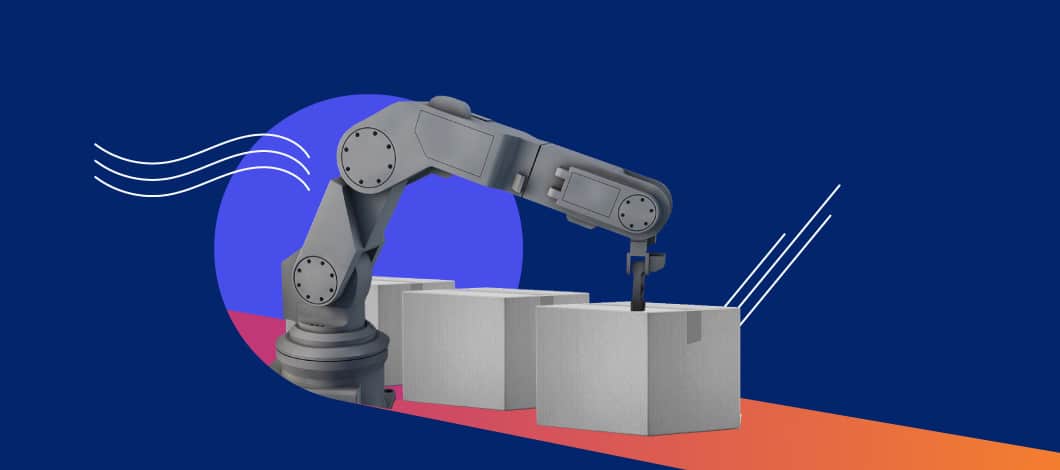Supply-chain resilience can help you survive disruptions such as the COVID-19 pandemic.
Here are 10 steps to strengthen your supply chain:
- Review your supply chain for weak points
- Create key performance indicators (KPIs) to evaluate your supply chain
- Automate supply-chain monitoring
- Use a modular supply-chain design
- Create buffers to avoid crunches
- Develop operational flexibility
- Implement security measures
- Develop contingency plans
- Build goodwill with suppliers, contractors and customers
- Integrate supply-chain management into your financing strategy
Continue reading our supply-chain resilience guide to learn more about what a resilient supply-chain strategy is, why it’s important and how to create a more efficient supply chain that can withstand disruptions.
What Is a Resilient Supply-Chain Strategy?
A resilient supply chain can be defined as one that has built-in safeguards against disruptions and can recover quickly.
Supply chains can be disrupted by any number of factors, including:
- Shortage of materials
- Production problems
- Shipment delays
- Payment issues with suppliers
- Cyberattacks
A resilient supply-chain strategy takes proactive steps to prevent these types of disruptions and to recover rapidly when they happen.

Why Is an Efficient Supply Chain Important?
Supply-chain disruptions are a perennial risk under normal circumstances, but recent events have made them a greater concern. The trade war between the U.S. and China has combined with the coronavirus to disrupt overseas supply chains.
According to a survey released in March by the Institute for Supply Chain Management, a nonprofit trade association, Chinese manufacturers were operating at half capacity, doubling average lead times for U.S. businesses dependent on them. While 80% of respondents anticipated that this would impact their business, over 44% did not have a plan on how to address this. Of these, 23% were already experiencing disruptions.
This illustrates how not having a resilient supply chain can create a potential emergency for your business. Knowing how to improve your supply-chain strategy can help you avoid business disruptions and help you recover more quickly when they happen.
10 Supply-Chain Best Practices
A resilient supply-chain strategy seeks to achieve 2 major goals:
- To prevent supply-chain disruptions through proactive planning
- To prepare for rapid recovery from disruptive events
Here are 10 supply-chain efficiency measures you can take to implement these objectives.
1. Review Your Supply Chain for Weak Points
To lay a foundation for building resilience, start by mapping your supply chain and identifying any weak points. A supply-chain map diagrams:
- Where your supplies come from (suppliers)
- How they get where they’re going (shipping)
- Where they end up (warehousing)
Systematically mapping this out and identifying where potential problems are likely to take place will help you identify your supply-chain priorities. You can use supply-chain planning software to help you with the mapping process and other steps in resilience planning.
2. Create KPIs to Evaluate Your Supply Chain
For accurate evaluation and tracking of resilience in your supply chain, you should adopt KPIs to measure specific variables.
Different supply-chain strategies will use different KPIs, but some common examples of important metrics include:
- Inventory accuracy: how closely your inventory database matches your physical supply count
- Inventory turnover: the number of times you sell your inventory per year
- Delivery and shipment times: the percentage of items received or shipped on or before delivery date
- Perfect order rate: the percentage of orders received and shipped without errors
- Cash-to-cash time cycle: the number of days between when you pay for supplies and when you get paid for sales
These KPIs are used to measure general supply-chain performance. Some supply-chain managers also use KPIs specifically designed to measure resilience. As logistics provider CTSI global summarizes, 2 key metrics for measuring resilience are:
- Time to recovery (TTR): the time required to recover from a supply-chain disruption
- Time to survive (TTS): how long your company can continue meeting customer demand without recovering from a disruption
A TTR longer than your TTS indicates you face the risk of going out of business if your supply chain is disrupted.
There are other supply-chain management metrics you can use. Adopt the KPIs most relevant to the specifics of your supply chain and business needs.
3. Automate Supply-Chain Monitoring
To put KPIs to practical use, you need to implement active monitoring and review of your numbers. The most efficient way to do this is to automate your supply-chain monitoring by using analytics software. Many supply-chain management solutions have built-in analytics tools. You also can customize your analytics by syncing a business intelligence software program with data from your supply-chain software.
To make sure your supply-chain data gets put to use, create standard procedures for reviewing your data. You can use your analytics program to create customized dashboard displays that let supply-chain managers monitor KPIs in real-time. You also can create customized reports to be reviewed on a regular basis.
4. Use a Modular Supply-Chain Design
By using mapping and KPI monitoring to identify weak spots in your supply chain, you can identify where you need to improve your design. One way to make your supply chain more resilient is by using a modular approach to supply base management, making it easy to replace weak links in order to prevent or counter disruptions.
Examples of modular approaches to supply-chain design include:
- Using designs with standardized parts which can be purchased from multiple sources
- Purchasing products or components already assembled rather than as parts
- Producing items at multiple locations rather than a single production center
- Setting up the production process so that one employee can step in for another
Review your supply chain and identify places where modularity could be introduced to prevent disruptions.
5. Create Buffers to Avoid Crunches
Installing safety cushions in your supply chain can prevent unforeseen events from becoming disruptive. You can implement buffers by using tactics such as:
- Keeping extra inventory of priority items on-hand
- Acquiring capacity for scaling up production or staff when needed
- Building extra time into your shipping estimates
Use your supply-chain map to identify opportunities for installing buffers.
6. Develop Operational Flexibility
A resilient supply chain should possess the flexibility to adjust its operations in response to disruptions.
You can develop operational flexibility by using methods such as:
- Designing your lists of materials (bills of material) with variable elements (variable bill of materials) so that some products are essentially similar but differ only by part quantity, reducing the variety of parts you need to maintain
- Developing alternate transportation methods and routes to circumvent disruptions
Operational flexibility allows you to adjust your product specifications or production flows in the event of disruptive events.
7. Implement Security Measures
Security crises such as cyberattacks and physical theft can disrupt supply chains. A resilient supply-chain strategy should include safeguards to prevent and respond to security issues. These should cover both digital and physical security measures.
8. Develop Contingency Plans
Supply-chain resiliency should be geared towards preventing disruptions, but should include contingency plans for responding when disruptions occur. To develop contingency plans:
- Conduct a risk analysis to identify your most likely disruption scenarios
- Create and document procedures for responding to each scenario
- Train your staff what to do in the event of each scenario
- Conduct tests to assess the effectiveness of your contingency plans
The better you prepare for disruptions, the more equipped you’ll be to respond and recover when contingencies happen.
9. Build Goodwill with Suppliers, Contractors and Customers
Your ability to prevent and counter supply disruptions depends partly on the strength of your relationships with your suppliers, contractors and customers. For example, if you have a strong relationship with a supplier, they are more likely to prioritize your business if they get low on inventory. Likewise, loyal customers are more likely to forgive you for shipping delays.
Seek to build strong relationships in order to support a resilient supply chain. Have procedures in place to mend relationships if a disruption occurs. For instance, you might adopt a policy of offering customers a discount or refund for late shipments caused by supply-chain problems.
10. Integrate Supply-Chain Management into Your Financing Strategy
A resilient supply-chain strategy should be supported by a complementary financing strategy. Building a resilient chain may require an infrastructure investment in automation tools, analytics software, manufacturing capability or other items. You also may need to purchase additional supplies or hire extra staff to respond to a disruption.
Develop a business financing strategy which factors in the resources you will need to support a resilient supply chain.
Preserve Your Supply Chain to Protect Your Business
In times when disruptions such as COVID-19 threaten supply chains, having a resiliency strategy in place can help protect your business. Follow the best practices in this supply-chain resilience guide to improve your ability to avoid and endure disruptions.
If you need to invest in automation or other measures to protect your supply chain, consider seeking financing through a merchant cash advance or other small business financing solution.











